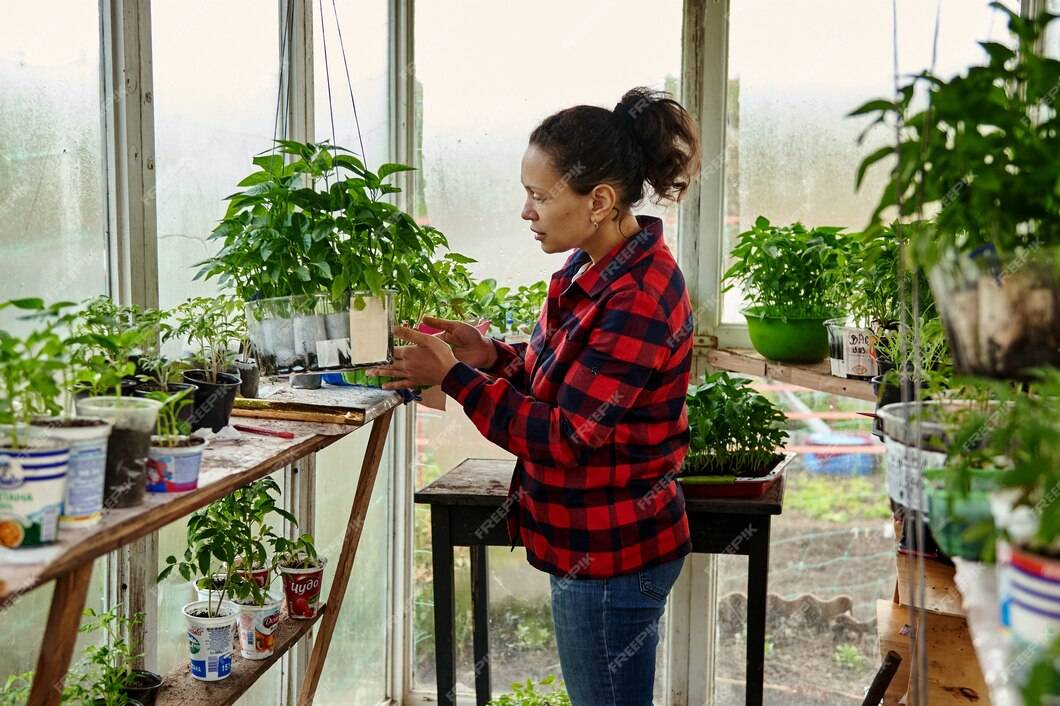With the recent years, there has been a noticeable shift toward eco-friendly gardening practices, as more people look to reduce their environmental impact and produce their own food at home. From the desire to eat healthier to the satisfaction of growing your own fresh produce, the benefits of home gardening are numerous. When combined with eco-conscious practices, home gardening can help reduce your carbon footprint, decrease reliance on packaged foods, and contribute to a healthier planet.
This guide will provide you with everything you need to know about starting an eco-friendly garden at home. Whether you’re a beginner or an experienced gardener, this guide will show you how to grow your own food sustainably while minimizing waste, using organic methods, and preserving local ecosystems.
Section 1: Understanding Eco-Friendly Home Gardening
Subsection 1.1: What is Eco-Friendly Gardening?
Eco-friendly gardening is the practice of growing plants in a way that is beneficial to the environment. This approach emphasizes sustainable practices, such as organic gardening, water conservation, and reducing pollution, all while producing healthy, nutrient-rich food. Eco-friendly gardening also promotes biodiversity and reduces the need for harmful chemicals, which can have long-lasting negative effects on the environment.
Key principles of eco-friendly gardening include:
- Soil Health: Maintaining rich, fertile soil through composting, mulching, and organic fertilizers.
- Water Conservation: Using efficient watering techniques like drip irrigation, rainwater harvesting, and xeriscaping.
- Biodiversity: Planting a variety of crops, flowers, and herbs to attract beneficial insects and pollinators.
- Waste Reduction: Using kitchen scraps for composting and reducing packaging waste by growing your own produce.
Subsection 1.2: The Benefits of Eco-Friendly Home Gardening
Fresh, Healthy Produce: By growing your own fruits and vegetables, you ensure they are free from pesticides and other chemicals. Organic food is often more nutritious than conventionally grown produce.
Reduced Environmental Impact: Eco-friendly gardening practices help reduce your carbon footprint. Growing your own food eliminates the need for transportation, packaging, and the environmental toll associated with conventional agriculture.
Cost Savings: Growing your own food can significantly reduce grocery bills, especially if you grow high-yield vegetables and fruits.
Increased Biodiversity: Eco-friendly gardens support a diverse ecosystem, promoting the health of local wildlife such as bees, birds, and beneficial insects.
Personal Satisfaction: The joy and pride of watching your plants grow and knowing you contributed to the environment through sustainable practices are immensely rewarding.
Section 2: Planning Your Eco-Friendly Garden
Subsection 2.1: Selecting the Right Space
Before you start planting, it’s important to assess your space. Whether you have a backyard, a balcony, or a windowsill, you can still create a productive and eco-friendly garden.
Backyard Gardens: If you have a backyard, you have plenty of room to grow vegetables, fruits, and herbs. Ensure your garden gets at least six hours of direct sunlight per day for most vegetables.
Container Gardens: For those with limited space, container gardening is an excellent solution. You can grow plants on patios, balconies, or even indoors.
Raised Bed Gardens: Raised beds provide good drainage and are ideal for growing crops like tomatoes, beans, and carrots.
Vertical Gardening: Utilize vertical space by installing trellises, wall planters, or hanging baskets. This is ideal for growing climbing plants like peas, cucumbers, and tomatoes.
Subsection 2.2: Choosing the Right Plants for Your Space
When it comes to eco-friendly gardening, it's crucial to choose plants that are suited to your climate and environment. This will reduce the need for excessive water and maintenance.
Climate Zones: Understand your USDA Hardiness Zone or similar climate zone classification. Plants suited to your region will thrive with minimal intervention.
Native Plants: Native plants are adapted to your local climate, making them drought-tolerant and low-maintenance. They also support local wildlife, including pollinators like bees and butterflies.
Companion Planting: Certain plants grow better when placed next to each other. For example, planting basil next to tomatoes can help repel pests. This technique also helps improve soil health and encourages biodiversity.
Drought-Tolerant Plants: If you live in an area with limited water resources, consider planting drought-tolerant species such as succulents, lavender, and rosemary.
Section 3: Soil Preparation and Fertilization
Subsection 3.1: Soil Health – The Foundation of Your Eco-Friendly Garden
Healthy soil is the cornerstone of any garden, especially for growing organic food. Organic matter like compost improves soil structure, water retention, and nutrient availability.
Soil Testing: Perform a soil test to determine its pH level and nutrient content. This will help you understand what amendments are necessary to optimize soil health.
Composting: Composting is an excellent way to recycle kitchen scraps and yard waste. Organic matter from compost helps improve the soil structure, adds nutrients, and supports beneficial microbes.
Mulching: Apply a layer of mulch around your plants to retain moisture, suppress weeds, and regulate soil temperature. Organic mulches, such as straw, wood chips, or grass clippings, are perfect for eco-friendly gardens.
Organic Fertilizers: Avoid synthetic fertilizers that can harm the environment. Instead, use organic fertilizers like fish emulsion, compost tea, or homemade organic blends. These provide slow-release nutrients and support healthy plant growth.
Section 4: Sustainable Watering Techniques
Water conservation is a key component of eco-friendly gardening, especially as water resources become increasingly scarce in many parts of the world. Efficient watering practices will help you use less water while keeping your garden healthy.
Subsection 4.1: Efficient Watering Practices
Watering Early in the Morning: Watering early in the morning ensures the plants have enough moisture for the day while minimizing evaporation losses.
Drip Irrigation: A drip irrigation system delivers water directly to the roots of the plants, minimizing water wastage and ensuring the water reaches where it’s most needed.
Rainwater Harvesting: Install a rainwater collection system (rain barrels or tanks) to gather rainwater from your roof. This can be used for irrigation, reducing your reliance on municipal water.
Soil Moisture Monitoring: Invest in soil moisture sensors to ensure you’re not overwatering or underwatering your plants. Overwatering can lead to root rot and water wastage.
Subsection 4.2: Xeriscaping and Drought-Tolerant Plants
Xeriscaping is a gardening technique designed to reduce the need for irrigation by selecting plants that require little water.
Drought-Tolerant Plants: Choose plants that can survive in dry conditions, such as lavender, thyme, and succulents. These plants require less water and are often low-maintenance.
Water-Efficient Landscaping: Design your garden to minimize water usage by grouping plants with similar water needs together.
Section 5: Natural Pest Control and Organic Practices
One of the core principles of eco-friendly gardening is avoiding synthetic pesticides, which can harm beneficial insects, pollinators, and the wider ecosystem.
Subsection 5.1: Understanding Beneficial Insects
Beneficial insects, such as ladybugs, bees, and predatory beetles, play an essential role in maintaining a healthy garden ecosystem. They help with pollination, control pest populations, and contribute to soil health.
Encouraging Pollinators: Grow a variety of flowers and plants that attract bees, butterflies, and other pollinators. Native plants are particularly effective at drawing in local pollinators.
Creating Habitat for Beneficial Insects: Provide shelter for beneficial insects by leaving areas of your garden undisturbed, using insect hotels, or planting nectar-rich flowers.
Subsection 5.2: Organic Pest Control Solutions
Neem Oil: Neem oil is a natural insecticide that can help control a wide range of pests without harming beneficial insects.
Companion Planting for Pest Control: Use plants like marigolds, garlic, and basil to deter pests from your garden.
Manual Pest Removal: For small infestations, manually remove pests from plants, using a damp cloth or water spray.
Beneficial Nematodes: These microscopic organisms attack soil-dwelling pests such as aphids and root weevils.
Section 6: Harvesting and Storing Your Eco-Friendly Produce
Once your plants start to mature, it’s time to harvest the fruits of your labor. Knowing when and how to harvest is key to enjoying fresh, homegrown food.
Subsection 6.1: Harvesting Tips
Timing Your Harvest: Harvest vegetables and fruits when they are fully ripe but not overripe. For most crops, the ideal time to harvest is in the morning when temperatures are cooler.
Proper Harvesting Techniques: Use clean, sharp scissors or garden shears to cut fruits and vegetables. Avoid pulling or twisting them off, as this can damage the plant.
Subsection 6.2: Storing Your Harvest
Canning: If you have a surplus of fruits or vegetables, consider canning them for long-term storage. Canning helps preserve your food and reduces waste.
Freezing: Some crops, like beans, peas, and berries, can be frozen for later use. Be sure to blanch vegetables before freezing to preserve their color and texture.
Drying: Herbs, tomatoes, and peppers can be dried and stored for later use. Use a food dehydrator or air-drying method.
Section 7: Creating a Sustainable, Long-Term Garden
To maintain a sustainable garden, consider a long-term approach that focuses on soil regeneration, biodiversity, and minimizing waste.
Subsection 7.1: Crop Rotation and Companion Planting
Crop Rotation: Rotate your crops each season to prevent soil depletion and reduce the risk of pests and diseases.
Companion Planting: Plan your garden with companion planting in mind to help your plants grow stronger and reduce the need for pesticides.
Subsection 7.2: Reducing Waste
Composting Kitchen Scraps: Composting food scraps is an easy way to reduce waste while creating nutrient-rich soil for your garden.
Repurposing Materials: Use old containers, wood, and other discarded materials for garden projects like raised beds or plant markers.
The Rewards of Eco-Friendly Home Gardening
By following the principles of eco-friendly gardening, you can enjoy a bountiful, sustainable harvest while helping the environment. Gardening not only provides fresh food but also offers a sense of connection to nature and a rewarding hands-on experience.
With the right tools, practices, and patience, anyone can start their own eco-friendly garden. Whether you’re growing in a small container or managing a large backyard garden, this guide has equipped you with the knowledge you need to make your home gardening journey a success.
Remember, every step you take toward sustainable gardening helps reduce your environmental impact and fosters a healthier, more balanced ecosystem. So, start your eco-friendly garden today and enjoy the many benefits that come with growing your own food!


